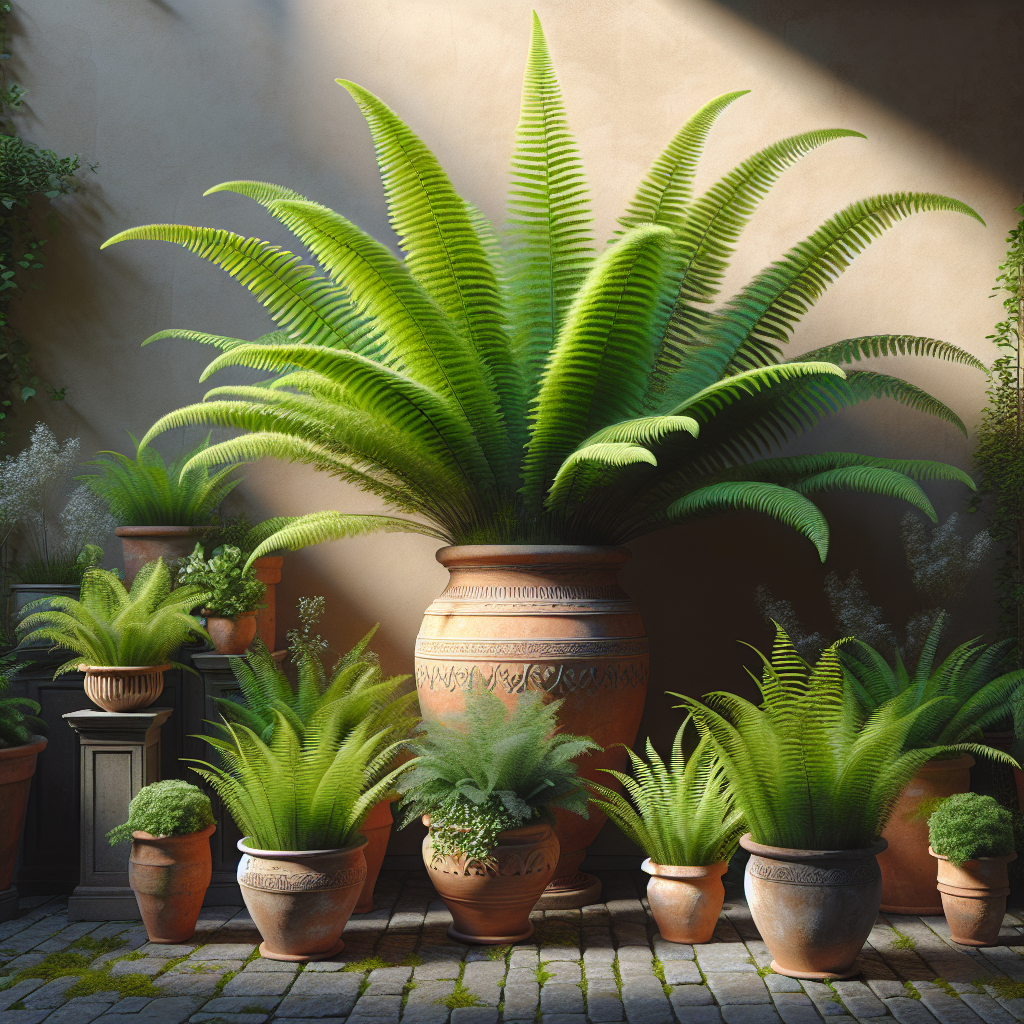Ferns are versatile and beautiful plants that can add a touch of lush greenery to any garden or indoor space. They are also excellent choices for container gardens, as they thrive in the controlled environment of a pot and can be easily moved around to create different looks and arrangements. In this article, we will explore some of the top fern varieties that are perfect for stunning container gardens.
1. Maidenhair Fern (Adiantum)
One of the most popular fern varieties for container gardens is the Maidenhair fern, also known as Adiantum. This delicate and graceful fern has distinctive fan-shaped fronds with black stems, adding a touch of elegance to any space. Maidenhair ferns prefer bright, indirect light and high humidity, making them ideal choices for indoor containers or shaded outdoor areas.
2. Boston Fern (Nephrolepis exaltata)
The Boston Fern is another classic choice for container gardens, with its long, arching fronds and lush green foliage. These ferns are easy to care for and can thrive in a variety of light conditions, from bright indirect light to partial shade. Boston Ferns are great for hanging baskets or tall containers where their fronds can cascade down gracefully.
3. Kimberly Queen Fern (Nephrolepis obliterata)
For a more modern look, consider adding Kimberly Queen Ferns to your container garden. These ferns have upright fronds that grow in a neat, compact shape, making them perfect for small pots or group plantings. Kimberly Queen Ferns are low-maintenance plants that prefer moderate to bright indirect light and regular watering.
4. Japanese Painted Fern (Athyrium niponicum)
If you’re looking for a unique and colorful addition to your container garden, Japanese Painted Ferns are an excellent choice. These ferns have silvery-green fronds with striking purple veins that provide a pop of color against the green foliage. Japanese Painted Ferns thrive in partial shade and well-draining soil, making them perfect for containers on patios or under trees.
5. Bird’s Nest Fern (Asplenium nidus)
For a tropical touch in your container garden, consider adding Bird’s Nest Ferns to the mix. These large ferns have glossy green leaves that grow in rosettes resembling bird’s nests, hence their name. Bird’s Nest Ferns prefer bright indirect light and high humidity levels, making them ideal choices for bathrooms or kitchens with ample natural light.
6. Rabbit’s Foot Fern (Davallia fejeensis)
Rabbit’s Foot Ferns are unique fern varieties with fuzzy rhizomes that resemble rabbit’s feet crawling over the soil surface of their containers. These whimsical plants have lacy green fronds that add texture and interest to any arrangement. Rabbit’s Foot Ferns prefer moderate indirect light and well-draining soil to thrive indoors or outside on shaded patios.
7. Staghorn Fern (Platycerium)
Staghorn Ferns are striking plants with distinctive antler-like fronds that grow in flat layers resembling deer antlers when mounted on walls or displayed in hanging baskets. These epiphytic ferns prefer bright indirect light and high humidity levels but can tolerate some direct sunlight if acclimated gradually. Staghorn Ferns make unique focal points in container gardens both indoors and outdoors.
8 . Autumn Brilliance Western Swordfern
Autumn Brilliance Western Swordferns have been traditionally used as houseplants but would do great outdoors too because they love humidity! For this reason you could use these swordferns not only outside but inside as well even though they would be best suited on porches where they receive filtered sunlight.
9 . Lady In Red
Lady In Red is known not only by its vibrant red new growth but also by its interesting red-stemmed leaves which makes this plant stand out from other varieties during winter months when other coloration might be lacking due shorter daylight hours.
10 .Cretan Brake
If you’re looking for something different than what we’ve already mentioned above then take into consideration including Cretan Brake within your container garden setup because it has finely divided foliage will bring texture contrast amongst other plantings while its deep emerald green coloration ensures it naturally blends with surrounding vegetation without seeming out place whatsoever!













